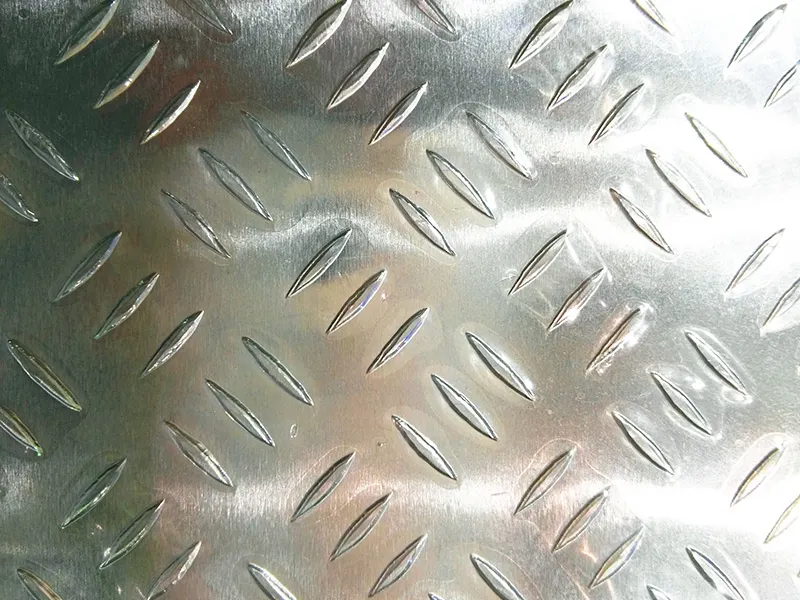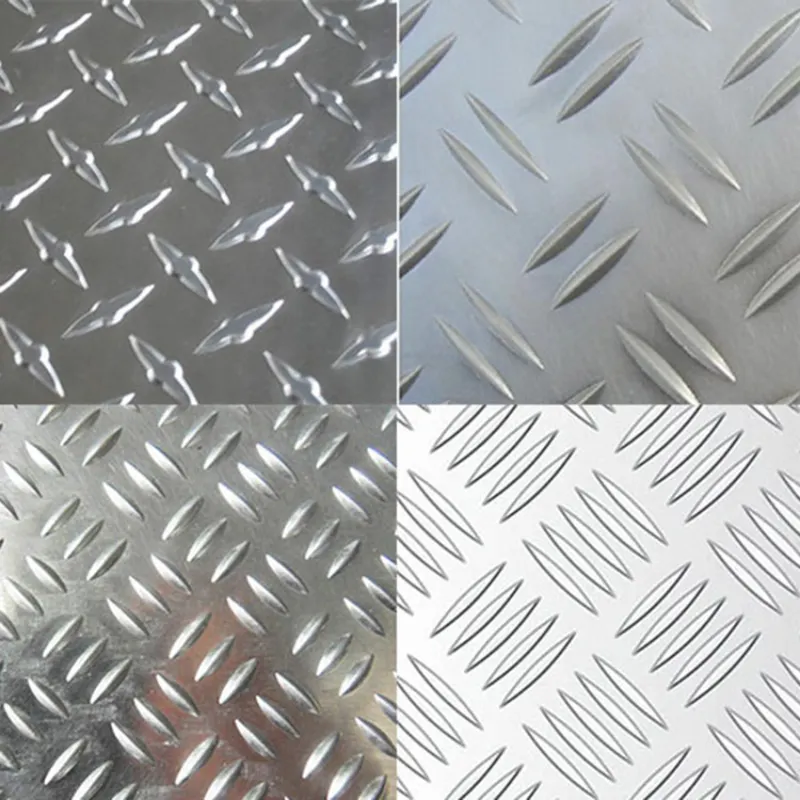Address
304 North Cardinal St.
Dorchester Center, MA 02124
Work Hours
Monday to Friday: 7AM - 7PM
Weekend: 10AM - 5PM
Address
304 North Cardinal St.
Dorchester Center, MA 02124
Work Hours
Monday to Friday: 7AM - 7PM
Weekend: 10AM - 5PM

Checkered plates are a common sight in many industries. Also known as diamond plate or tread plate, these metal sheets feature a distinctive raised pattern on one side. This pattern provides excellent grip, making them ideal for areas where slip resistance is crucial. But beyond their anti-slip properties, understanding checkered plate weights is key to successful project planning, costing, and installation.

| Material | Thickness (mm) | Approx. Weight (kg/m²) |
|---|---|---|
| Aluminum | 2.0 | 5.4 |
| Aluminum | 3.0 | 8.1 |
| Aluminum | 4.0 | 10.8 |
| Steel | 3.0 | 23.5 |
| Steel | 4.5 | 35.3 |
| Steel | 6.0 | 47.1 |
| Stainless Steel | 3.0 | 24.0 |
| Stainless Steel | 5.0 | 40.0 |
Note: Values are approximate and may vary based on pattern type and alloy composition.
| Standard Sheet Size (mm) | Thickness (mm) | Weight (kg) |
|---|---|---|
| 1000 × 2000 | 3.0 | 47 |
| 1250 × 2500 | 3.0 | 73 |
| 1500 × 3000 | 3.0 | 106 |
| 1000 × 2000 | 4.5 | 71 |
| 1250 × 2500 | 4.5 | 110 |
| 1500 × 3000 | 4.5 | 159 |
These standard sizes are common for aluminum, mild steel, and stainless steel checkered plates, suitable for industrial and architectural projects.
| Type | Material | Main Feature | Common Use |
|---|---|---|---|
| Aluminum Checkered Plate | 3003 / 5052 / 6061 | Lightweight, anti-corrosion | Stair treads, marine flooring |
| Steel Checkered Plate | Q235 / SS400 | High strength, cost-effective | Truck beds, factory floors |
| Stainless Steel Checkered Plate | 304 / 316 | Rust-proof, aesthetic | Food and chemical industries |
You can calculate the approximate weight using:
Weight (kg) = Length × Width × Thickness × Density
| Material | Density (kg/m³) |
|---|---|
| Aluminum | 2700 |
| Steel | 7850 |
| Stainless Steel | 7930 |
For checkered plates, add 2–3% extra to account for the raised pattern thickness.
| Pattern Type | Feature | Weight Adjustment |
|---|---|---|
| Diamond | Deep raised shape | +2% |
| Five-Bar | Medium height | +3% |
| Lentil | Flat raised texture | +1% |
| Round Bead | Smooth aesthetic | +2% |
The raised pattern adds slightly to the total weight compared to a flat sheet of the same base thickness.
A checkered plate is a flat metal sheet with a regular, raised pattern of diamonds or lines on one surface. This pattern isn’t just for looks; it significantly increases friction and prevents slipping, making it a safety feature in many environments.

Commonly, checkered plates are made from:
The choice of material directly impacts the checkered plate weights, which is a critical factor we will discuss further.

The weight of a checkered plate is not just a number; it has significant implications for various aspects of a project:
Several key factors determine the final checkered plate weights:
The most significant factor is the material. Steel is much denser than aluminum, so a steel checkered plate will be considerably heavier than an aluminum checkered plate of the same dimensions and thickness.
It’s simple: thicker plates contain more material, thus increasing the checkered plate weight. Manufacturers offer a range of thicknesses to suit different load requirements and applications.
The length and width of the plate directly influence its overall weight. A larger sheet will always weigh more than a smaller one of the same material and thickness.
While less significant than material or thickness, the specific raised pattern can subtly affect the total weight by adding a small amount of extra material. However, this is usually negligible for most calculations.
To give you a better idea, here’s a table showing approximate checkered plate weights for common materials and sizes. Please note these are typical values and can vary slightly by manufacturer and specific alloy.
| Material | Thickness (mm) | Thickness (inch) | Approx. Weight per Sq Meter (kg) | Approx. Weight per 4×8 ft Sheet (kg) |
|---|---|---|---|---|
| Steel | 3 | 0.118 | 24 | 71 |
| 4.5 | 0.177 | 36 | 107 | |
| 6 | 0.236 | 48 | 142 | |
| Aluminum | 3 | 0.118 | 8 | 24 |
| 4.5 | 0.177 | 12 | 35 | |
| 6 | 0.236 | 16 | 47 |
(Note: 1 sq meter ≈ 10.76 sq ft; 1 kg ≈ 2.2 lbs. A 4×8 ft sheet is approximately 2.97 sq meters.)
This table highlights how significantly the steel checkered plate weight differs from the aluminum checkered plate weight.
Let’s dive a little deeper into the two main materials used for checkered plates.
Steel checkered plates are renowned for their strength, rigidity, and cost-effectiveness. They are often chosen for heavy-duty applications where maximum durability and load-bearing capacity are required, even if it means a higher steel checkered plate weight.
Key characteristics:
Aluminum checkered plates are preferred when weight is a critical factor. Their lightweight nature combined with excellent corrosion resistance makes them suitable for a different range of applications. The lower aluminum checkered plate weight can lead to savings in shipping and easier handling.
Key characteristics:
The unique properties of checkered plates, including their slip resistance and varying checkered plate weights, make them suitable for a wide array of uses:
When selecting a checkered plate for your project, consider these questions:
Always consult manufacturers’ specifications and local building codes to ensure you select the appropriate type and thickness of checkered plate. Understanding the checkered plate weights is a crucial step in making an informed decision.
A 4×8 ft (1220×2440 mm) aluminum plate with 3 mm thickness weighs around 21–22 kg.
Yes, the raised pattern adds 2–3% to the total weight compared with a flat plate.
Aluminum is about three times lighter than steel, making it easier to handle and install.